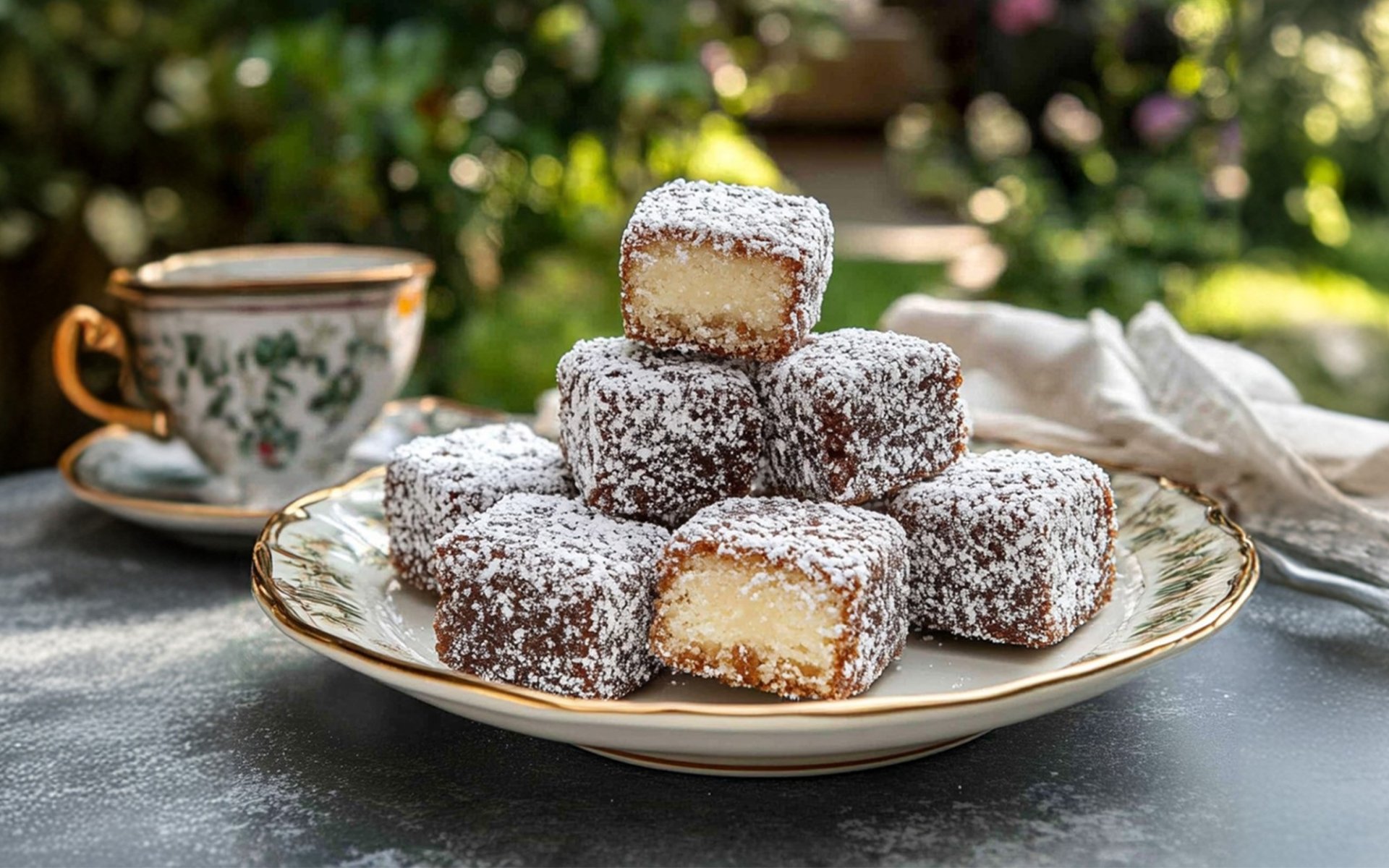Lamington Cake

Australia is a land imbued with a sense of simplicity and a rich tapestry of diverse cultures. Thus, its unforgettable identity extends beyond kangaroos and koalas. Another fascinating aspect is its culinary diversity. Walking along the streets, you'll find numerous restaurants offering a fusion of cuisines from various nationalities. However, many of these establishments often feature Lamington Cake as a prominent item on their menu.
Lamington cake is a highly renowned dessert in Australia. If you've ever visited, you've likely had the opportunity to savor its unique taste. However, the true origin of Lamington cake has been a subject of debate for centuries. This article will delve into the intriguing history of Lamington cake, a dessert that, despite its disputed origins, undeniably holds a significant place in Australian culture and has captured the hearts of people worldwide.
What is Lamington Cake? And the Mystery of Its Origin
Lamington cake is a very famous dessert from Australia. Anyone who has visited there likely had the opportunity to sample its unique taste. Lamington cake is characterized by its soft, fluffy sponge cake texture, cut into square shapes, then dipped in rich chocolate sauce and coated generously with shredded coconut. This combination creates a perfect balance of sweet, moist, and aromatic flavors, along with a delightful texture from the coconut. However, the true origin of Lamington cake remains a topic of long-standing debate and historical inquiry.
Theory 1: The Government House Genesis in Queensland
Historical evidence suggests that Lamington cake was created in the early 20th century. It is widely believed that the cake was named after Lord Lamington, the Governor of Queensland, who served from 1896 to 1901. This theory recounts the story of Armand Gallad, a talented French chef who worked for Lord Lamington.
The story goes that one day, unexpected guests arrived suddenly at Government House, prompting Lord Lamington to hastily order his chef to prepare refreshments. At that moment, ingredients in the kitchen were limited as Chef Gallad had not prepared anything in advance. With quick wit and resourcefulness, he devised a new snack using only the available ingredients. He took a sponge cake baked the day before (a common practice among chefs of that era for convenience), cut it into bite-sized squares, then dipped them in chocolate sauce to add moisture and flavor. Finally, he rolled them in desiccated coconut to enhance texture and aroma, as coconut was already available in the kitchen. The result was a delicious and innovative dessert, which was then named after Lord Lamington. This narrative is widely accepted and recounted throughout Australia.
The Origin Debate: New Zealand or Queensland?
However, the story of Lamington cake does not end there, as it takes an intriguing turn. Some historians believe that Lamington cake was not created in Australia but rather in New Zealand. They claim that the recipe was first published in a New Zealand cookbook titled The Lamington Book, which was published before Lord Lamington even took office as Governor of Queensland. This claim has sparked considerable debate regarding the true origin of the cake.
Yet, the debate continues. Further evidence has emerged, showing that the recipe for Lamington cake as it is known today, with its characteristic shape and ingredients, was first published in the Queensland Country Life magazine on December 17, 1900. This timing precisely coincides with Lord Lamington's tenure as Governor of Queensland. Therefore, the story that Lamington cake originated in Queensland and was named after him remains the most credible and widely accepted theory.
From Debate to National Dessert
Despite the ongoing historical debate surrounding its exact origin, Lamington cake has ultimately become the most famous dessert accepted by Australians and widely recognized as one of their national culinary symbols. After its recipe was published, Lamington cake spread rapidly across Australia like wildfire, infiltrating tea rooms, bakeries, and becoming a beloved snack for social gatherings and afternoon tea. Its simple preparation, combined with its captivating taste and harmonious textures, has made Lamington cake a true "icon of Australia," known to virtually everyone.
Social Role and Charitable Contributions
During World War I and World War II, Lamington cake gained even greater significance in Australian society. It wasn't merely a dessert but also an integral part of social movements and charitable activities. Australians often used this sweet treat as part of fundraising efforts for various causes, including supporting soldiers involved in the war and aiding those affected by the conflict. Because Lamington cake was easy to prepare, affordable, satisfying, and could be produced in large quantities for convenient distribution, during this period, the image of Lamington cake became strongly associated with charitable work by various organizations, symbolizing unity and mutual aid in times of hardship.
Modern Evolution and Flavor Diversity
Over the years, Lamington cake has evolved to include many new flavors and variations, no longer confined to its original recipe. Bakers and modern chefs have experimented with creative new versions to add depth and variety to this classic dessert:
- Fillings: Various fruit jams (such as raspberry or strawberry) or fresh creams (like vanilla cream or whipped cream) are now often used as fillings between sponge cake layers, adding delightful sweetness and creamy richness.
Diverse Glazes: Beyond the traditional chocolate sauce, some recipes involve coating the sponge cake with a wider array of new glazes, such as coffee, strawberry, orange, lemon, or even sauces infused with tropical fruit flavors, creating unique tastes and textures.
Lamington Cake Today : A National Celebration
Today, Lamington cake remains deeply embedded in Australian culture, so much so that it even has its own special day. National Lamington Day is celebrated annually on July 21st. On this day, bakeries, cafes, and households across Australia express their affection for this sweet treat by indulging in the diverse flavors of Lamington cake throughout the day, whether it's the classic recipe or new, innovative creations. This dessert truly reflects the simplicity, joy, and emotional connection that Australians share through their food.


